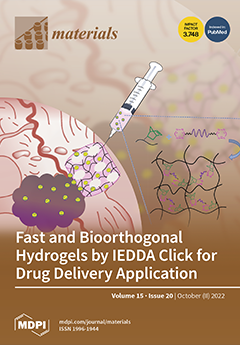Potassium is used extensively as a promoter with iron catalysts in Fisher–Tropsch synthesis, water–gas shift reactions, steam reforming, and alcohol synthesis. In this paper, the identification of potassium chemical states on the surface of iron catalysts is studied to improve our understanding of
[...] Read more.
Potassium is used extensively as a promoter with iron catalysts in Fisher–Tropsch synthesis, water–gas shift reactions, steam reforming, and alcohol synthesis. In this paper, the identification of potassium chemical states on the surface of iron catalysts is studied to improve our understanding of the catalytic system. Herein, potassium-doped iron oxide (α-Fe
2O
3) nanomaterials are synthesized under variable calcination temperatures (400–800 °C) using an incipient wetness impregnation method. The synthesis also varies the content of potassium nitrate deposited on superfine iron oxide with a diameter of 3 nm (Nanocat
®) to reach atomic ratios of 100 Fe:
x K (
x = 0–5). The structure, composition, and properties of the synthesized materials are investigated by X-ray diffraction, differential scanning calorimetry, thermogravimetric analysis, Fourier-transform infrared, Raman spectroscopy, inductively coupled plasma-atomic emission spectroscopy, and X-ray photoelectron spectroscopy, as well as transmission electron microscopy, with energy-dispersive X-ray spectroscopy and selected area electron diffraction. The hematite phase of iron oxide retains its structure up to 700 °C without forming any new mixed phase. For compositions as high as 100 Fe:5 K, potassium nitrate remains stable up to 400 °C, but at 500 °C, it starts to decompose into nitrites and, at only 800 °C, it completely decomposes to potassium oxide (K
2O) and a mixed phase, K
2Fe
22O
34. The doping of potassium nitrate on the surface of α-Fe
2O
3 provides a new material with potential applications in Fisher–Tropsch catalysis, photocatalysis, and photoelectrochemical processes.
Full article






